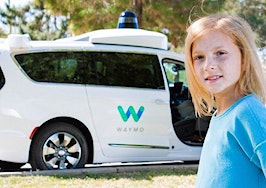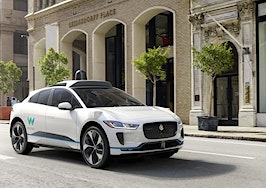In case you haven’t already seen them speeding by, motorized electric rental scooters from startups including Bird and LimeBike have landed in a big way in several American metros, especially on the West Coast. And their proliferation around city streets — they can be discarded anywhere thanks to modern location sensors and apps — have prompted an outright clampdown from local governments.
But Realtors in San Francisco and Los Angeles seem to be in two minds about whether they are in favor of the new wheeled sensations. If there’s any consensus, it’s that the scooters are a mixed blessing — and a fun idea that could help sell an area to buyers, especially millennials.
But on the flip side, they can be off-putting to buyers not in that age range, who do not enjoy stepping over scooters carelessly left on the sidewalk as they explore a neighborhood.
As the San Francisco Chronicle says, scooters are already crowding sidewalks, making it difficult for seniors and others with mobility problems to walk.
They can also make driving precarious when an unexpected scooter pops out in front of you, said Pacific Union International L.A. agent, Joseph Treves, who is open to them. But as Treves told Inman, “people can be stupid.”
“I think if people rode them with safety in mind they would be great,” Treves continued. “I have had several near misses because riders have not stopped at red lights, or have ridden against traffic on either the sidewalk or street, and because they move rather quickly, it’s hard to see them coming. I’m not alone on this.”
The Los Angeles Times has also opined on the traffic dangers that go hand and hand with the Bird scooters in the Venice area.
Pacific Union Santa Monica agent Robbie Sikora finds them useful for work. “I use Bird scooters all the time. They definitely come in handy for caravan,” Sikora told Inman in an email.
But for Pamela Wilson, associate partner with The Malibu Life, part of Pacific Union L.A., they can be a hindrance in the course of her work.
“When they are left out in front of property, clients are tripping over scooters so it’s a definite inconvenience, but it services a younger demographic, with younger homebuyers seeing them as a [good] mode of transport,” she told Inman.
In Santa Monica, where Wilson lives, because the scooters are still new to the market, the rules and regulations are too light, she said.
“It’s a mess,” she said frankly.
Although you are meant to be 18 and over to ride the Bird scooters, Wilson said she has seen 12- and 14-year-olds who’ve borrowed their mom or dad’s credit card and been allowed to ride on one. There is no enforcement of the rules, she said.
Up the coast, meanwhile, in San Francisco, the city has been converged on by a variety of brands of motorized scooters — Bird, LimeBike and Spin, according to the San Francisco Chronicle.
Robert Parker, senior sales associate with Climb Real Estate thinks their presence can help property markets that doesn’t have the best public transportation options.
He said in an email to Inman: “Scooters provide the ability to buy in different neighborhoods because it makes these areas more accessible. If there are easy ways to obtain them in neighborhood, I believe they would help increase home values and up the walkability factor,” he said.
Climb’s Lauren Quach thinks they are just making things worse in an already busy traffic city.

Credit: Lauren Quach
“The scooters are undoubtedly very convenient for riders, but they tend to be inconvenient for everyone else. They are left anywhere from leaning up against a building blocking pedestrian traffic to being knocked over into a parking spot on a busy street in the financial district,” she told Inman in an email.
Her colleague, Carter Waite meanwhile finds them very useful for work. He told Inman in an email: “One time, I was trying to get to an appointment during rush hour in the rain, but the cars were barely moving. I knew there’d be parking on Berry Street, so I found the closest spot, hopped on a scooter and raced to my destination. I weaved through traffic easily despite the stares and smiles (I was also in a suit) and was able to meet my client right on time.”
It is a generational thing, Waite thinks. “I believe millennials embrace culture shock a little easier, while people living here for 30 to 40 years can be a bit more resistant,” he said.
These scooters are “game changers” compared to the peer-to-peer scooters and bike sharing programs because you don’t need to find a parking stall, Waite said. “You can leave them anywhere in the city. It’s truly door-to-door, which is incredible.”
And it is up to the riders to be responsible about where they leave the bikes, he said. Waite always tries to find a little nook somewhere so the scooter is not in anyone’s way. “I’ve already become accustomed to them as the city moves at a rapid pace.”
But if the scooters are proving a hazard in your area, maybe agents should step up and do something about it. If you are looking for a campaign to improve the community, this could be it.
According to Malibu Life’s Pamela Wilson, the city of Santa Monica is pretty polarized on what to do about the scooters.
Asked if she would get involved in putting a petition together so that the city council would take more steps, she said, “Time allowing, yes.”
Somebody needs to take action.
“I’m a big believer in scooters, they are a great service to the community, but there are too many cons outweighing the pros at the moment,” she said.













